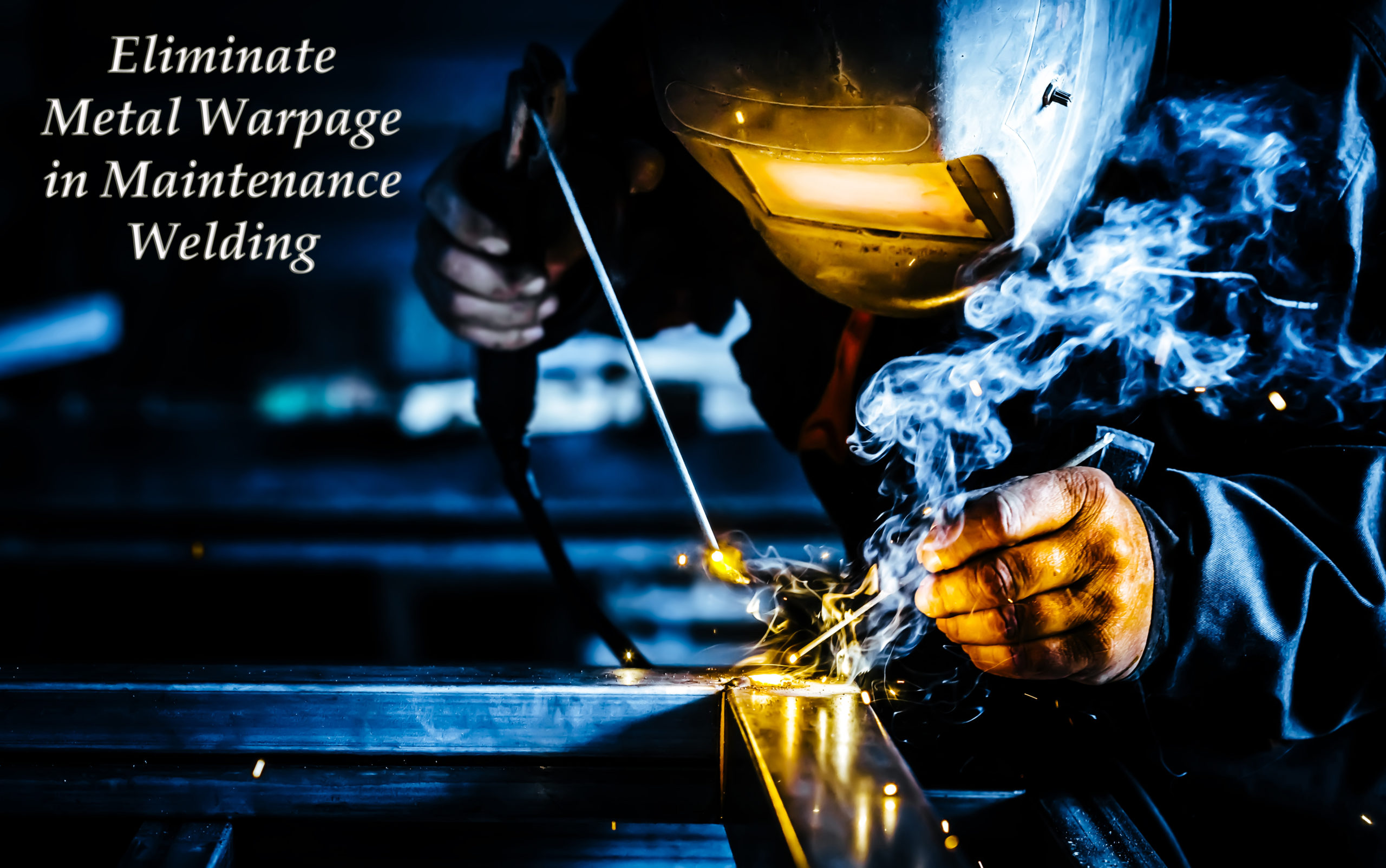
A question we often receive is, “How can I prevent metal warpage when repairing or maintaining a piece of metal equipment?”
The distortion welding metal can create is not visually appealing. It can negatively impact the efficiency of a piece of equipment. If you’re looking for ways to eliminate or control metal warpage, know that you’re not alone. For this reason, we’ve decided to tackle the problem. This article will tell you everything you need to know about metal warpage and how to eliminate it.
What Is Metal Warpage and How Does It Form?
Metal warpage refers to the distortion that a base metal gets, being bent or twisted out of shape, because of the amount of heat involved in the welding process.
But how does metal warpage happen, exactly?
Risk of metal warpage tends to increase as the temperature goes up during the welding process. That’s because when the metal heats, it expands while it usually contracts when cooling down.
Let’s take a closer look at the phenomenon.
When a metal is heated, it automatically expands. Unrestricted, it will contract the same amount when cooling down and no warpage or distortion will occur. However, you’re often working on a specific part that belongs to a larger metal piece. The section you’re working on will not heat at the same temperature as the rest of the piece.
The partial restraint and the lack of uniform heating explain the thermal distortion and warpage that happens during the welding process.
Why is metal warpage an issue for welders?
Warpage can not only cause unappealing aesthetics on the final component, piece of equipment, or product, but it can also render the machine or component you’re working on unusable.
How To Eliminate And Prevent Warpage?
Anticipate Welding Warpage
Step 1: visualize the whole process and anticipate potential problems that may arise. Seeing the big picture can help you better prepare and minimize metal warpage in some instances.
Take a few moments to assess what needs to be done and what material you’re working with. For instance, light materials tend to warp more than denser ones, so working with lighter materials might require you to take extra precautions.
Preset The Parts
Step 2: If you can, preset your parts. Position all the parts you need to weld together in the right layout and run some test welds. This will help you identify potential problems such as gaps, abrasions, or dents and ensure you assemble the components in such a way that you can compensate for any distortions.
Apply a Heat Sink
Step 3: Apply a heat sink either on the surrounding area of a weld or directly behind it to help prevent the heat from spreading, dramatically reducing the risks of damaging the metal around the weld. Welding heat sinks are designed to keep your equipment cool through a heat transfer process.
Using Intermittent Welding When Possible
Intermittent welding is a great technique to prevent warping. It involves leaving evenly spaced gaps between each weld instead of running a bead along the whole length of the juncture. Intermittent welding minimizes the amount of heat put into the weld, and the sections that haven’t been heated won’t be distorted, thus providing heated areas a little room for expansion.
Clamping
Step 4: Properly clamping your metal parts can help prevent warping by holding the parts together when welding, thus helping you control distortion.
Looking For A Reliable American Welding Supply Provider?
At Muggy Weld, we’re committed to providing our clients with high-quality welding supplies. Our goal is to provide welding industry players like you with premium welding products that will withstand the test of time and help you save time and money on repairs and maintenance down the road. Our heat sink and low-temperature solder are both manufactured in the US and will help prevent metal warpage when welding.
So, if you’re looking for quality equipment, don’t hesitate to visit our website to browse our range of products. And if you’d rather have a chat to discuss your needs in more detail, don’t hesitate to get in touch.
The team will be happy to assist you!
